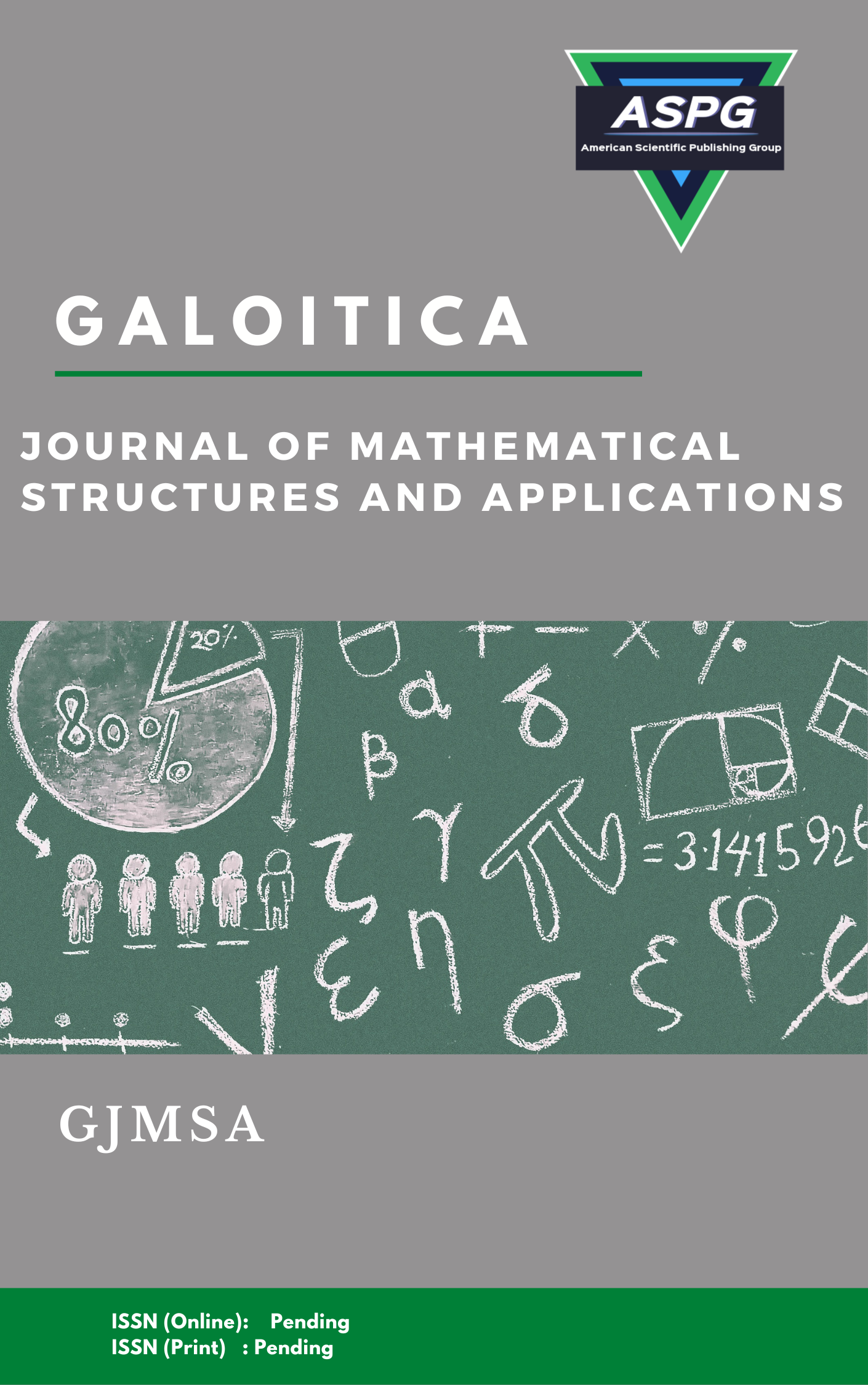

Volume 5 , Issue 2 , PP: 17-26, 2023 | Cite this article as | XML | Html | PDF | Full Length Article
Murat Ozcek 1 *
Doi: https://doi.org/10.54216/GJMSA.050203
“Fuzzy probability theory” appeared as a smooth extension of classical probability theory in 1995. It was expected that it will be of great importance in quantum mechanics, but the theory doesn’t keep its development as it was expected. This necessitates revising some of its fundamental basic concepts. We argue that if quantum probability theory should have less constrained than classical probability theory as can be seen in the case of joint random variables, we surely need to weaken the definition of the intersection operation. In this paper, discuss the definition validity in quantum probability theory and to discuss the consistency of the given definitions with the whole theory and the possibility to have a more suitable definition.
probability theory , quantum mechanics , fuzzy set , fuzzy probability
[1] [Bau81] H. Bauer, (1981). Probability Theory and Element of Measure Theory. Academic Press. second edition.
[2] [BB95] E. G. Beltrametti, & S. Bugajski, (1995). “Quantum observables in classical framework”. Int. J. Theor. Phys. 34(8). 1221–1228.
[3] [BB02] E. G. Beltrametti, & S. Bugajski, (2002). “Quantum mechanics and operational probability theory”. Found. Scien. 7. 197–212.
[4] [BB03] E. G. Beltrametti, & S. Bugajski, (2003). “Entanglement and clas- sical correlations in quantum frame”. Int. J. Theor. Phys. 42(5). 969–981.
[5] [BB04] E. G. Beltrametti, & S. Bugajski, (2004). “Separating classical and quantum correlations”. Int. J. Theor. Phys. 43. 1793– 1801.
[6] [BB05] E. G. Beltrametti, & S. Bugajski, (2005). “Correlations and entan-glement in probability theory”. Int. J. Theor. Phys. 44(7). 827–837. - [BHL07] P. Busch, T. Heinonen, & P. Lahti, (2007). “Heisenberg’suncertainty principle”. Phys. Rep. 452. 155–176.
[7] [Bil86] P. Billingsley, (1986). Probability And Measure. John Wiley & Sons. second edition.
[8] [BL10] Kiukas, J. Busch, P. & P. Lahti, (2010). “On the notion of coexistence in quantum mechanics”. Mathematica Slovaca. 60. 665–680 .
[9] [BLM96] P. Busch, P. Lahti, & P. Mittelstaedt, (1996). The Quantum Theory of Measurement. Springer. second edition.
[10] [BS08] P. Busch, & W. Stulpe, (2008). The structure of classical extensions of quantum probability theory. J. Math. Phys. 49. 1–22.
[11] [Bug96] S. Bugajski, (1996). “Fundamentals of fuzzy probability theory”. Int. J. Theor. Phys. 35(11). 2229–2244.
[12] [Bug98a] S. Bugajski, (1998).“Fuzzy stochasticprocesses”. Open Sys. Info. Dyn. 5. 169–185.
[13] [Bug98b] S. Bugajski, (1998). “On fuzzy random variables and statistical maps”. Rep. Math. Phys. 41(1). 1–11.
[14] [Bus85] P. Busch, (1985). “Indeterminacy relations and simultaneous measurements in quantum theory”. Int. J. Theor. Phys. 24(1). 63– 91.
[15] [Bus10] G. Busch, P. & Jaeger, (2010). “Unsharp quantum reality”. Found. Phys. 40. 1341–1367.
[16] [CB90] G. Casella, & R. L. Berger, (1990). Statistical Inference. Duxbury Press.
[17] [CF10] F. Chovanec, & Roman, Frič. (2010). “States as morphisms”. Int. J. Theor. Phys. 49. 3050–3060.
[18] [FP10] R. Frič, & M. Papčo, (2010). “A categorical approach to probability theory”. Studia Logica. 94. 215–230.
[19] [Fri07] R. Frič, (2007). “Statistical maps. A categorical approach”. Mathematica Slovaca. 57. 41–58.
[20] [Gra89] M. Grabowski, (1989).“What is an observable”. Found. Phys. 9(7). 923– 930.
[21] [Gud98] S. Gudder, (1998). “Fuzzy probability theory”. Demonestratio Math. 31(3). 235–254.
[22] [Gud99] S. Gudder, (1999). “Observablesand statistical maps”. Found. Phys. 29. 877– 897.
[23] [Gud00] S. Gudder, (2000). “What is fuzzy probability theory”. Found. Phys. 30. 1663–1678.
[24] [Gud08] S. Gudder, (2008). “Quantum Markov chains”. Jour. Math. Phys. 49(7). 72105 –72300.
[25] [Gud09] S. Gudder, (2009). “Transition effect matrices and quantum Markov chains”. Found. Phys. 39. 573–592.
[26] [HN02] E. D. Habil, & T. Z. Nasr, (2002). “On fuzzy probability theory”. Int. J. Theor. Phy. 41(4). 791–810.
[27] [Lam66] J. Lamperti, (1966). Probability. a survey of the mathematical theory. W. A. Benjamin.
[28] [Lar82] H. J. Larson, (1982). Introduction to Probability Theory and Statistical Inference. John Wiley and sons. third edition.
[29] [LM86] R. J. Larsen, & M. Marks, (1986). An Introduction to Mathematical Statistics and its Applications. Library of congress cataloging-in- publication data. second edition.
[30] [Mes95] R. Mesiar, (1995). “Do fuzzy quantum structures exists”. Int. J. Theor. Phys. 34(8). 1609–1613.
[31] [Mye06] J. M. Myers, (2006). “Conditional probabilities and density operators in quantum modeling”. Foundations of Physics. 36. 1012–1035.
[32] [Nas00] T. Z. Nasr, (2000). “Fuzzy probability theory”. Master’s thesis. Islamic university of Gaza.
[33] [Pop04] H. F. Pop, (2004). “Data analysis with fuzzy sets. A short survey”. Stdia univ. Babes-Bolyai. info. XLIX(2). 111–122.
[34] [Rie00] B. Riečan, (2000). “On the probability theory on mv algebras”. Soft Computing. 4. 49–57.
[35] [Zad65] L. Zadeh, (1965). “Fuzzy sets”. Info. Cont. 8. 338– 353.